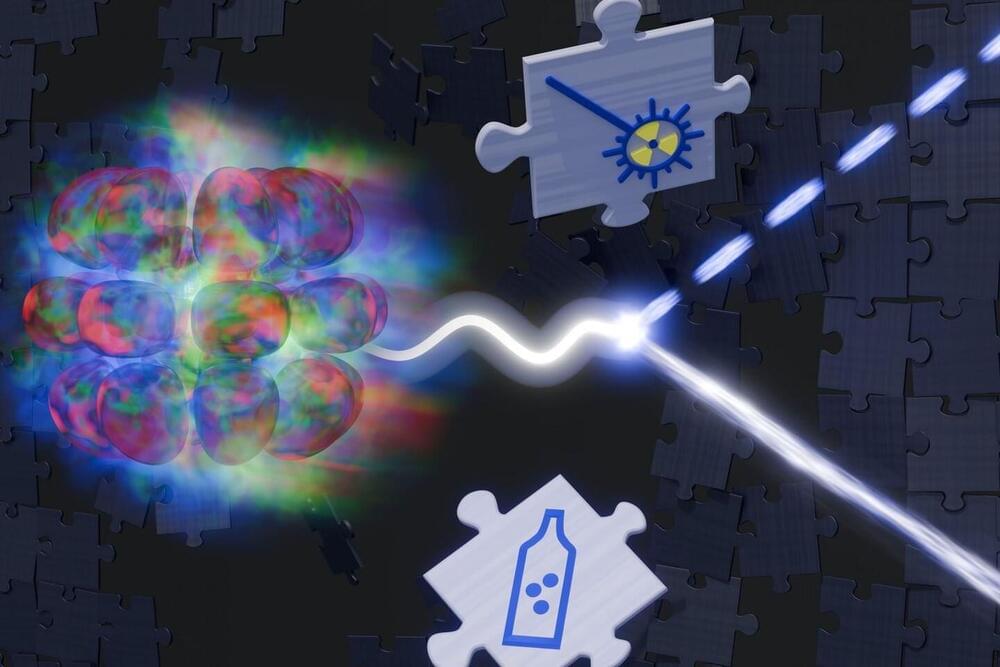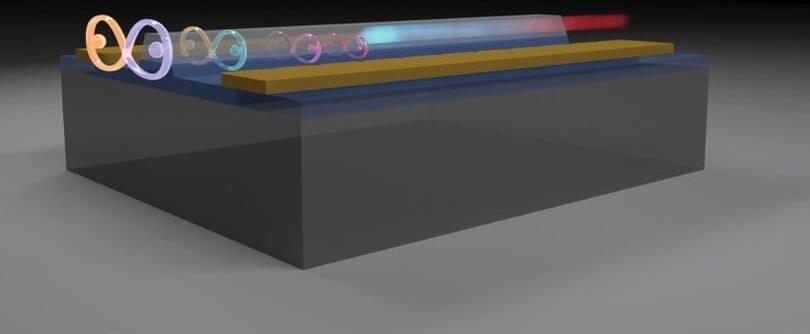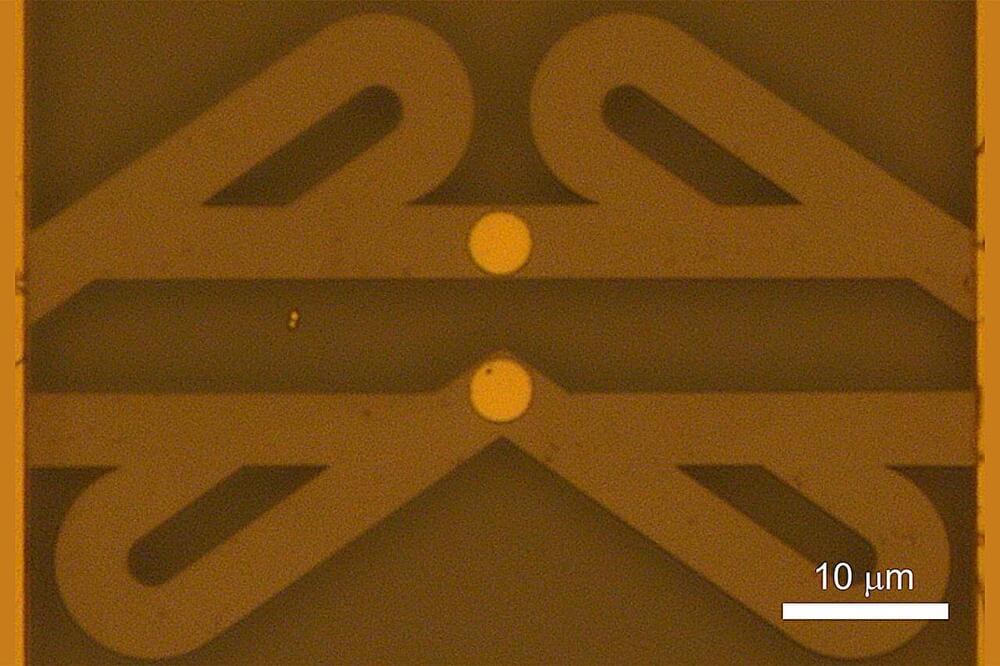Neutrons are among the basic building blocks of matter. As long as they are part of a stable atomic nucleus, they can stay there for arbitrary periods of time. However, the situation is different for free neutrons: They decay—after about 15 minutes, on average.
Thin-film lithium niobate is an emerging nonlinear integrated photonics platform ideally suited for quantum applications. Through spontaneous parametric down-conversion (SPDC), it can generate correlated photon pairs for quantum key distribution, teleportation, and computing.
While infrared cameras are valuable tools for enhanced vision, food and plant quality control, security, etc, today’s cameras often face significant drawbacks. For instance, they are bulky and power-hungry, requiring cooling systems that limit their functionalities.
More importantly, current semiconductor-based technology used in the cameras only captures a narrow band of the infrared spectrum based on the absorption band of the semiconductor detector. This means that every application would need a separate camera.
“Due to the complications of today’s bulky, power-hungry and expensive infrared imaging technology, we are unlikely to have an infrared camera at home. However, nonlinear frequency conversion, a process that manipulates and translates electromagnetic signals across various frequency regimes, holds a massive potential to revolutionize infrared detection technology,” said Prof Mohsen Ramhami, the leader of Advanced Optics and Photonics Lab, and a UK Research and Innovation Future Leaders Fellow.
Researchers from the Institute of Industrial Science, The University of Tokyo, have developed a method to control the direction of heat flow in crystals. This miniature device could eventually be used to create advanced thermal-management systems in electronic devices to prevent overheating.
7 linux distributions that feel just like windows.
I often think of Windows 10 as “Windows 8.1 done right”, and Windows 11 as a natural evolution of that refinement, with plenty of improvements under the hood.
However, considering that Windows is still a closed, commercial platform, many users with concerns about privacy or dissatisfaction with Windows 11 may continue to seek alternative operating systems that offer more control while providing a similar experience to the Windows GUI.
In this article, we’ve picked best Linux distributions that offer the best possible Windows-like desktop experience on Linux. Whether you’re transitioning from Windows or just prefer a similar look and feel, these distros are designed to make the switch easy and seamless.
In recent years, artificial intelligence (AI) and deep learning models have advanced rapidly, becoming easily accessible. This has enabled people, even those without specialized expertise, to perform various tasks with AI. Among these models, generative adversarial networks (GANs) stand out for their outstanding performance in generating new data instances with the same characteristics as the training data, making them particularly effective for generating images, music, and text.
GANs consist of two neural networks, namely, a generator that creates new data distributions starting from random noise, and a discriminator which checks whether the generated data distribution is “real” (matching the training data) or “fake.” As training progresses, the generator improves at generating realistic distributions, and the discriminator at identifying the generated data as fake.
GANs use a loss function to measure differences between the fake and real distributions. However, this approach can cause issues like gradient vanishing and unstable learning, directly impacting stability and efficiency. Despite considerable progress in improving GANs, including structural modifications and loss function adjustments, challenges such as gradient vanishing and mode collapse, where the generator produces a limited variety, continue to limit their applicability.
Nets wont do it, nets wont cut it, and to me, nets say: we dont know and we sorta give up. We need One System to be able to engage All Types and All Classes of drones, w/ EMF — RF jammers, Microwaves, Lasers, Projectiles, and Missiles. All acting simultaneously, to engage a So Called Drone Swarm.
U.S. Air Force officials at Langley Air Force Base in Virginia are looking at installing anti-drone nets to help protect F-22 Raptor stealth fighters on the flightline. This comes nearly a year after the base was subjected to waves of still-mysterious drone incursions, which The War Zone was first to report. It also underscores the U.S. military’s continued lag when it comes to responding to the very real threats posed by uncrewed aerial systems, at home and aboard, and particular hurdles to doing so domestically.
Langley’s 633rd Contracting Squadron put out a notice on October 4 asking for information about potential counter-drone netting that could be installed around up to 42 existing open-ended sunshade-type shelters at the base. Langley, now technically part of Joint Base Langley-Eustis, is one of a select few bases to host F-22s and is a key component of the Air Force’s posture to defend the U.S. homeland.
The 633rd “is in the process of determining the acquisition strategy to obtain non-personal services for the Unmanned Ariel Services (UAS) Netting for East Ramp Metal Sunshades,” according to the contracting notice. “The intention of the netting is to deter and ultimately prevent the intrusion of UAS’s near airmen and aircraft. This initial sunshade netting installation on the metal sunshade (bay Alpha 1) shall serve as a proof of concept for the remaining sunshades.”
Neural microtissues derived from pluripotent stem cells (iPSCs) can replace dopaminergic neurons, the nerve cells that are lost in Parkinson’s disease, and restore motor function when grown into tiny capsules and transplanted into the brains of model rats, a study led by TreeFrog Therapeutics found.
“TreeFrog Therapeutics has overcome the most complex challenges of developing a successful treatment for Parkinson’s disease using our C-Stem platform technology and producing a therapy containing mature dopaminergic neurons with a unique 3D format that promotes cell survival post-graft with proven pre-clinical results,” Jens Schroeder, MD, PhD, TreeFrog’s chief medical officer, said in a company press release.
The study, “Bioreactor-produced iPSCs-derived dopaminergic neuron-containing neural microtissues innervate and normalize rotational bias in a dose-dependent manner in a Parkinson rat model,” was published in Neurotherapeutics.








